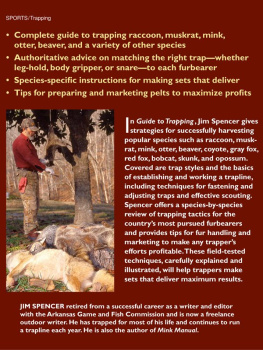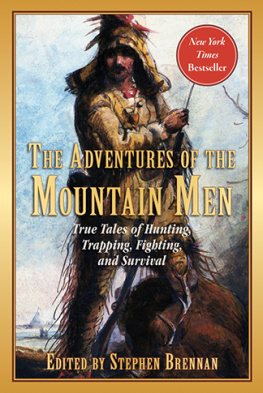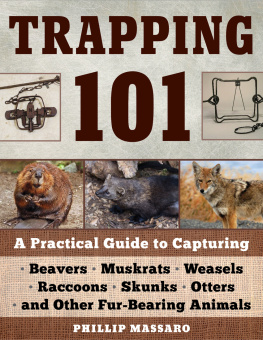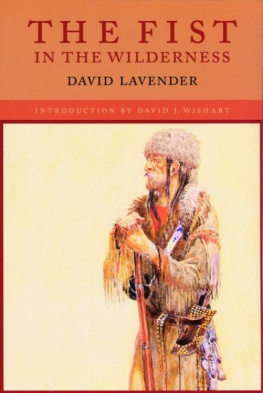Copyright 1909 by A.R. Publishing Company
First Skyhorse Publishing Edition 2016
All rights reserved. No part of this book may be reproduced in any manner without the express written consent of the publisher, except in the case of brief excerpts in critical reviews or articles. All inquiries should be addressed to Skyhorse Publishing, 307 West 36th Street, 11th Floor, New York, NY 10018.
Skyhorse Publishing books may be purchased in bulk at special discounts for sales promotion, corporate gifts, fund-raising, or educational purposes. Special editions can also be created to specifications. For details, contact the Special Sales Department, Skyhorse Publishing, 307 West 36th Street, 11th Floor, New York, NY 10018 or .
Skyhorse and Skyhorse Publishing are registered trademarks of Skyhorse Publishing, Inc., a Delaware corporation.
Visit our website at www.skyhorsepublishing.com.
10 9 8 7 6 5 4 3 2 1
Library of Congress Cataloging-in-Publication Data is available on file.
Cover design by Tom Lau
Cover water color: Western Landscape by Johann Hermann Carmiencke
Print ISBN: 978-1-63450-678-6
Ebook ISBN: 978-1-63450-679-3
Printed in the United States of America
Table of Contents
List of Illustrations
Foreword
I have been interested in the great outdoors for as long as I can remember; I would tag along with my dad wherever and whenever hed let me. No matter if we were fishing, hunting, or visiting with the old timers that Dad hunted with, I was mesmerized by the stories, camaraderie, and gear associated with all of it. While Dad would take my younger brother and me fishingthe one sport I could participate in as a small boyit was Dads love of trapping that led to my first real adventures in the wilderness surrounding our Hudson Valley home. Mom wasnt exactly on board, but at seven or eight years of age I was allowed to accompany Dad when checking traps. In time, I began to help him with the skinning and stretching of fur.
I loved the trips to Ralphs Gun Shop when the fur-buyer came to town and was proud as a peacock when Dad would look over at me and wink as he and the buyer would come to an agreement on prices and all that hard work turned into cash. This was the late 1970s, when the Russian fur market was booming, and prices were high. Though I got cold, though the work was sometimes dirty and smelly, it was a bond with my father and the other older guys who would come around to boil, wax, and tune the traps in late summer, and who would team up with Dad in the fall to maximize the take. I felt privileged that to know all the animals and the gear associated with the whole affair. Id borrow Dads trapping books, and spend hours perusing the variety of hunting and trapping magazines he kept around the house. The love of trapping, and the outdoors in general, carried into my adulthood and has taken me all over the globe.
Like hunting, trapping lends a certain connection to the past; a link to the pioneers who risked life and limb to explore the lands that lie past the edges of maps for its untapped source of fur. While the political winds have shifted in the past two or three decades, and some look down on trapping as barbaric and cruelincorrectly, I might addit taught me responsibility and gave me a respect for nature and the value of a life. I loved the challenge of outwitting foxes; they were among the smartest animals we trapped, and man, Dad was good at it.
Reading those old books, and sitting at my fathers side listening to the gentlemen who were in their seventies and eighties, I had a glimpse of how things were; a vision into a bygone era. These were men who used horses to plow fields, men who were accustomed to driving a team of horses and carriage to hunt foxes out-east where there were more woods than fields. Their memories reached back to the 1920s, and reading Elmer Harry Krepss book brings me back to being that little boy and hearing all those wonderful tales. He has a very matter-of-fact style of writing, one that gets right to the point and clearly demonstrates the technique at hand.
In addition to the great advice contained within these covers, Mr. Kreps gives the reader a feel for the attitude toward trapping in 1909 and an example of how ingenuity made up for a lack of technology. Instead of buying pure beeswax from a supply house to dip his traps, Elmer describes a blend of indigenous oils and saps, readily available at little cost. Such was the manner of our forefathers: they made what they couldnt buy and handed down the traditions from generation to generation. Personally, I truly enjoyed his sections on trapping wolves and bears; this practice is all but gone today, but was a perfectly viable means of collecting both species 100 years ago. Those Newhouse No. 150 bear traps are now collectors items, but in Krepss day, they were working tools.
While our world has rapidly shrunk and real experiences are slowly replaced by virtual ones, Elmer Kreps has preserved for us a time when people could easily live without electricity orheaven forbida cellular telephone, and could rely on themselves while handling trap lines measured in miles and trap numbers into the hundreds. Kreps walked, trapped, and consorted with Indians, learning much along the way, as well as hobnobbing with other expert trappers around the continent.
I, for one, am very glad he did. Pull up a chair, close to the fire, and let Mr. Kreps relate his experiences
Phillip Massaro
West Coxsackie, NY
March 2016
Introduction
Among the many outdoor occupations, trapping furbearing animals is perhaps the most pleasant and in many instances is also very profitable.
Although trapping was one of the earliest industries of this country, the occupation has not passed away along with the vanishing wilderness, for there is more trapping done today than at any time in the past. Scattered all over North America, in both the thickly settled portions and the more remote districts, are thousands of trappers who are deriving both pleasure and profit from this unique calling each season.
Trapping in itself is an art. Many of the wild creatures are exceedingly wary, and the trapper must match his reason against the instinct, the natural wariness, and the acquired knowledge of the animals. This wariness alone has saved some species of animals from extinction, and although man is superior to all brute life, such intelligent animals as the fox and the wolf frequently prove a match for the most expert of trappers.
In order to be successful, one must know the wild animals as a mother knows her child. The trapper must also know and use the most practical methods of trapping, and it is my objective to give in this work the most successful trapping methods known.
These modes of trapping furbearing animals have, for the most part, been learned from actual experience in various parts of the country, but I also give the methods of other successful trappers, as I know them to be as good as my own. I am personally acquainted with some of the most expert trappers in North America and have also followed the Indians over their trap lines and in this way have learned many things that are not generally known to the white man.
Elmer Kreps
CHAPTER ONE
THE TRAPPERS ART
During past ages, many of the wild creatures of the forest and stream were hunted and captured in various ways by the inhabitants of the wildernessthe flesh of these animals being the principal food of many tribes of Natives and the skins being used for clothingbut it was only after furs became a staple article of wearing apparel among civilized nations and the traders had learned of the profits to be made in the fur trade that wholesale and systematic trapping began. For many years after the commencement of the fur trade in this country, the occupation of trapping was monopolized by the Native inhabitants, but later some of the bolder of the white race pushed into the wilderness and learned the trappers art.













